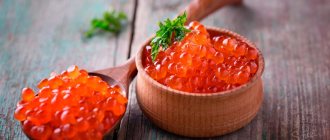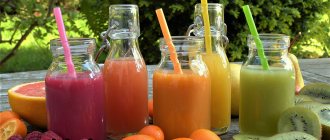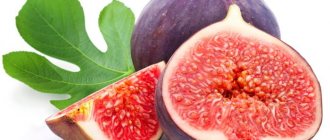Many people wonder what vegetables a nursing mother can eat. During lactation, a young mother should take responsibility for compiling her menu. All dishes that a woman consumes during this period affect the well-being of the baby. Since the compounds included in their composition enter the child’s body with the help of mother’s milk. The digestive system of a newborn is not able to digest and assimilate foods due to the fact that it is not yet sufficiently formed and weakened.
What can a mother eat while breastfeeding in the first month of her baby’s life?
Unfamiliar foods should be introduced gradually. A sharp change in the taste characteristics of breast milk has a negative impact on the child’s psyche. In addition, some dishes can provoke allergic reactions. After eating a new food, the mother should observe the child’s reaction for 2 to 3 days. If the baby’s well-being does not deteriorate, it is allowed to continue administering the product, gradually increasing the portion. If negative signs appear, you should stop eating unfamiliar food. The attempt can be repeated after a couple of months, when the children's gastrointestinal tract is sufficiently strong.
Important! The introduction should start with one unfamiliar product. This will help determine the cause of the body’s negative response (if any).
What vegetables can be introduced in the first month of breastfeeding? During breastfeeding, a woman is recommended to eat food rich in beneficial microelements and minerals, which will help restore all systems after the birth of the child. To do this, you should create a balanced menu containing healthy foods. The diet should contain:
- vegetables;
- lean meat;
- bread;
- a large amount of liquid without gas;
- porridge.
When answering the question of what vegetables a woman can eat while breastfeeding, it is worth noting that dishes should be prepared using hot steam, baking or boiling. Fried foods should not be consumed during natural feeding; they can cause stool upset in the baby. Soups should be cooked in non-rich vegetable and meat broths without frying. As for dairy products, they need to be purchased from trusted places, carefully studying the composition and shelf life. It must be made from natural ingredients, without the addition of chemical compounds (flavors, preservatives). It should also be taken into account that many children are prone to allergies to cow protein.
It is recommended to give preference to the least rich types of bread. Bread products are necessary for a young mother; they help normalize the activity of intestinal peristalsis. You need to control your drinking regime. Drinking plenty of fluids stimulates the production of mother's milk.
Answering the question of what vegetables a woman can consume while breastfeeding during the 2nd month of lactation, we can note the absence of any changes. It is recommended to delay the introduction of heavier foods.
What vegetables should you eat with caution?
Not all vegetables are completely safe for infants. Some of them can cause allergic reactions and also lead to a deterioration in the child’s well-being. You can eat them, but you must carefully evaluate the baby’s health condition.
Potentially dangerous ones include:
- Beet. Useful for reduced immunity, as well as for constipation and anemia.
- Eggplants . Improve metabolism.
- Cucumbers. Helps normalize the functioning of the thyroid gland. In addition, they have low calorie content, so they are used in dietary nutrition.
- Tomatoes. Rich in iron and zinc. Improves the functioning of the gastrointestinal tract, as well as the nervous and genitourinary systems.
- Celery. Helps fight increased gas formation and is useful for the gastrointestinal tract.
You should also know that any exotic vegetables should be completely excluded from the diet of a nursing mother.
What vegetables can a woman eat while breastfeeding?
Pediatricians advise nursing mothers to eat seasonal vegetables. Fruits arriving from other regions in winter are most often treated with chemical compounds. Therefore, you should freeze foods, this way you can preserve the maximum of valuable compounds.
The mother's diet during breastfeeding should include stewed vegetables, baked or steamed: cauliflower, potatoes, onions, zucchini, carrots. Once the baby reaches 4 months of age, the nursing woman can be given other vegetables (eggplant, corn, greens, pumpkin pulp, beets).
Not recommended vegetables
- Onion and garlic
When breastfeeding, mother should not eat spicy foods. You can introduce onions and garlic into your diet six months after the baby is born. Garlic and onions are good preventatives for colds. They will improve immunity and cure viruses;
- Eggplants, bell peppers and tomatoes
Doctors do not advise eating colored vegetables when feeding, because colored foods can cause allergies. However, they contain substances that are beneficial for the baby and mother. Therefore, do not give up these products completely. Include colored vegetables in your menu three to four months after giving birth.
Tomatoes contain iron, calcium and zinc, vitamins C and B6. The fruits are an excellent preventative against cancer, anemia and osteoporosis. The daily norm is one or two pieces per day.
Eggplants stimulate intestinal function, reduce cholesterol levels and increase lifespan. This product is suitable for children suffering from anemia, as it promotes hematopoiesis. It is beneficial to drink a glass of eggplant juice a day. Sweet pepper strengthens capillaries, improves immunity, and helps cope with insomnia and depression. In addition, it prevents the development of cancer and the occurrence of blood clots. After introducing peppers into your diet, eat one pepper per day. At the same time, choose green peppers.
- cucumbers
Cucumbers are rich in iodine, which contributes to the normal functioning of the thyroid gland. They improve digestion, normalize metabolism and promote the absorption of protein foods.
Cucumbers can be introduced into the diet no earlier than three months after the birth of the child. At the same time, choose only fresh vegetables. Salted and pickled cucumbers must be excluded.
- White cabbage
This type of cabbage is very beneficial for the body, but it causes bloating and negatively affects digestion. Therefore, when breastfeeding, it is better to give preference to cauliflower or broccoli. Eliminate sauerkraut from your diet. This is an “aggressive” product that can negatively affect the baby’s digestion.
We have determined which vegetables can be consumed by a mother while breastfeeding, and which cannot. These recommendations are suitable for the first 3-4 months of a baby’s life. During this time, the body adapts and gets used to it, after which you gradually begin to introduce new products to the menu.
Remember, it's not just what foods you can eat that matter. But also how to eat them correctly.
What should you use with extreme caution?
Many mothers are interested in what vegetables can be used to prepare dishes while breastfeeding, we have already talked about this a little higher. Next, let's look at the fruits that need to be consumed carefully during breastfeeding:
- Exotic vegetables. Many of them can cause allergies or digestive upsets.
- Legumes. They can provoke increased accumulation of intestinal gases and colic in a child. Administration is allowed when the baby reaches 3 months of age, not earlier. First you should try beans, lentils or peas, prepared by stewing or boiling.
- Onion garlic. Pediatricians do not recommend eating spicy foods during lactation, at least in the first months. After eating garlic or onions, breast milk takes on a specific taste.
- White cabbage. You should not eat raw or sauerkraut during the 1st month of breastfeeding. This vegetable can cause flatulence and fermentation processes. From the second month of breastfeeding, you can begin to introduce stewed or boiled fruit in small portions, while observing the child’s reaction.
- Cucumbers. They can provoke increased accumulation of intestinal gases. Therefore, you should not abuse these fruits during 1 month of lactation.
- Tomatoes. Eating this vegetable helps prevent osteoporosis and anemia. Pediatricians do not recommend introducing tomatoes at first, due to the possible occurrence of allergies. It is recommended to begin the introduction with yellow-hued varieties, which are considered hypoallergenic.
There is an opinion that brightly colored vegetables should not be consumed during breastfeeding. However, this is not quite true. In the absence of a predisposition to allergic manifestations, pediatricians allow eating such fruits, starting with a small piece.
How to eat vegetables while breastfeeding?
When answering the question of what vegetables a nursing mother can eat, it should be noted that during natural feeding, the advantage remains with products made using hot steam, boiled, or baked. These heat treatment methods help preserve a large number of valuable elements. Raw vegetables are difficult for the child's body to digest, causing rumbling, colic, and changes in stool consistency.
Pediatricians recommend eating seasonal vegetables. Imported fruits are most often treated with chemicals for long-term storage.
Rules for eating vegetables for a nursing mother
During natural feeding, a nursing mother should adhere to some rules for eating vegetables:
- An unfamiliar product should be introduced carefully, starting with a small piece eaten in the morning. Over the next couple of days, monitor for possible deterioration in the baby’s well-being.
- If there are no allergy symptoms (red itchy rashes, colic, stool upset), you can continue introducing the new vegetable. If a negative reaction occurs, you should refrain from consuming unfamiliar food (at least for a couple of months).
- Take a three-day break between taking new dishes.
- Do not overeat, this will negatively affect the baby’s well-being.
- Do not season dishes with mayonnaise sauces. If desired, you can use olive oil as a dressing for vegetable salads.
- Eat vegetables that have been heat-treated (baked, boiled or steamed). Sometimes you can eat a raw vegetable. Fried fruits must be excluded from the mother's diet.
- If possible, purchase seasonal vegetables; it is even better to grow your own fruits. Thus, a woman can be confident in the quality of her harvest.
- Wash food thoroughly before cooking.
It is recommended to freeze seasonal foods for the winter. In this case, they will retain the maximum of valuable substances.
Important! Freezing can only be done once.
Features of introducing stewed vegetables into the diet
To ensure that the mother’s diet does not harm the baby, doctors ask you to adhere to the following recommendations:
- introduce vegetable dishes into the menu gradually, starting with single-ingredient ones;
- Carefully monitor your baby’s reaction to each new product. If you notice symptoms of an allergy or digestive disorder, immediately remove the irritant from your diet and visit a doctor. Allergies usually manifest themselves in the form of itching, rash, and redness on the baby’s skin. Indigestion is indicated by vomiting and nausea, stool disorders, swelling, tearfulness, and poor sleep.
If no negative reactions are detected, the woman can continue to eat vegetable dishes, but in moderation. Overeating can cause indigestion in both mother and baby. In addition, the risk of flatulence in an infant increases.
When and how to introduce it into the diet?
Vegetables recommended for administration during breastfeeding can be eaten just a few days after the start of lactation. A large number of microelements are found in raw fruits. However, until the baby reaches 3 months of age, they must be boiled, baked, or cooked using hot steam.
Vegetables, like any other food, must be introduced gradually during breastfeeding, one product every 2 to 3 days. This time is enough to understand whether an allergic reaction to a certain product has occurred. Before eating raw fruits, you must wash them thoroughly and remove the skin and seeds (if necessary). The combined use of cucumbers, green onions, bell peppers, and parsley helps prevent anemia and improve the absorption of iron.
Turnips, sweet peppers, parsley and celery should be eaten in the form of a salad dressed with natural yogurt. Potatoes and broccoli must be cooked before consumption. Beetroot and carrots make healthy drinks that contain antioxidants, beta-carotene, help improve visual function, and increase the body's protective qualities. Broccoli and sorrel are used to make various soups.
Allowed vegetables during lactation
In the first month of establishing lactation, a nursing mother needs to approach her menu carefully. Some vegetables provoke increased gas formation, colic, diarrhea and an allergic reaction in a newborn. Pediatricians and neonatologists will help you figure out which vegetables you can feed naturally.
There is a list of permitted and absolutely harmless vegetables that must be followed:
- Potato. Contains thiamine, potassium and phosphorus, amino acids - necessary components for the full development of the child. Potatoes improve metabolic processes and remove excess fluid and salt from the body. But you should not abuse the product, as it is high in calories and leads to weight gain.
- Beet. An excellent natural remedy for postpartum constipation. Strengthens the immune system, prevents anemia, removes toxins, helps cope with depression. Increases the body's endurance, which is important for a new mother. Beets are not eaten if you have diabetes; they are limited if you have osteoporosis, as it interferes with the absorption of calcium.
- Carrot. Normalizes carbohydrate metabolism. It is a source of carotene, a substance responsible for hair growth and vision. It should be introduced gradually, since a child may develop an allergy due to a large amount of vitamin A.
- Zucchini. They include fiber, which removes bile acids from the body, pectins, which eliminate toxic substances, vitamins, micro- and macroelements. Zucchini is an excellent substitute for beets without causing gas or allergies. The product can be added to any vegetable dish; they are neutral and quick-cooking.
- Bell pepper. An excellent dietary vegetable. Accelerates the absorption of iron, is filled with vitamin C, removes toxins from the body of a nursing mother. Provides collagen synthesis, which is responsible for the health of gums, bones and teeth.
- Eggplant. Normalize the functioning of the kidneys and urinary tract. They have a mild laxative effect and have a positive effect on the liver.
- Celery. Prevents many diseases, strengthens and rejuvenates the body. Tones, relieves stress, improves sleep. By consuming celery root, a nursing mother will improve the condition of her skin, hair, lips and eyes.
- Cauliflower. Rich in folic acid, an essential substance for the development of the baby’s nervous system. Strengthens the cardiac system and has bactericidal properties. Normalizes hormonal levels. No less useful is broccoli, rich in iron, potassium and zinc. The product contains substances that inhibit the growth of cancer cells. This type of cabbage is also used to treat ulcers.
- Green onions. Increases appetite, improves digestion, strengthens tooth enamel. The fiber in onion feathers promotes weight loss, which is extremely important for many mothers after childbirth.
- Pumpkin. It is a storehouse of vitamins and substances that ensure normal digestion. Pumpkin pulp relieves swelling and eliminates constipation. This is a low-calorie, tasty product. It is administered with caution, as an allergy is possible.
The list of vegetables recommended during breastfeeding is quite large. They can be eaten as a separate main course, added to soups, eaten in the form of salads, cooked porridges, stews and casseroles. A vegetable side dish along with cereals increases milk flow.
What to cook?
Below are recipes for a nursing mother (stewed vegetables, healthy creamy soup, salad). Answering the question whether it is possible to eat vegetable stew while breastfeeding, it is worth saying that the products used to prepare this dish must be introduced into the diet in advance and separately. If your baby feels good after eating unfamiliar food, you can safely prepare a stew from these vegetables.
Vegetable puree soup
To make the dish you will need:
- several potatoes;
- cauliflower inflorescences;
- pumpkin pulp;
- zucchini;
- carrot.
Actions:
- Wash the prepared ingredients, peel and cut into small pieces.
- Place the resulting mass in a cooking vessel, add water or low-fat broth, and add salt to taste.
- Place the pan on the stove, turning on the heat.
- Cook on low until done.
- Once the ingredients are soft, puree them using a blender, adding broth.
You can add finely chopped herbs, low-fat sour cream or a few drops of olive oil to the prepared puree soup. It is very important to choose vegetables that were already present in the mother's diet.
Stewed zucchini
Required components:
- zucchini, fresh or frozen;
- carrot;
- tomato.
Manufacturing steps:
- Wash the zucchini and cut into small pieces.
- Place the resulting mass in a saucepan and simmer for several minutes.
- Add peeled carrots, grated on a grater with small holes, and tomato pieces.
- Mix the ingredients and add salt to taste.
- Cook on low heat until fully cooked.
The dish can be sprinkled with finely chopped herbs.
Cauliflower salad
Cauliflower is a storehouse of microelements. To prepare a salad from this product, you need to divide it into inflorescences, then boil them until tender in salted water. You can check readiness with a fork - the cabbage should become soft. Then drain the liquid and cool the cabbage. After this, salt the cooked inflorescences, sprinkle with lemon juice, season with low-fat sour cream, and mix. You can add a little greenery.
Table of vegetables for breastfeeding
| Name of healthy vegetable allowed for consumption during breastfeeding | Main action |
| Potato | Normalization of metabolism, saturation of the body with thiamine, phosphorus, potassium, removal of salts. |
| Cauliflower, broccoli | Improving mood, stabilizing the central nervous system, cardiovascular system, kidneys, strengthening bones, preventing cancer. |
| Carrot | Normalization of visual function, improvement of the appearance of the skin, assistance in the normal development of the baby. |
| Beet | Stimulation of intestinal peristalsis, relief of inflammatory processes, reduction of pain. |
| Zucchini | Cleansing the body of toxic elements, improving the structure of the dermis, nail plates, hair, strengthening protective properties. |
| Pumpkin | Elimination of swelling, thanks to the removal of excess fluid from the body, normalization of the gastrointestinal tract. |
Vegetables are the healthiest food after childbirth. They are able to bring variety to the menu, accelerate the growth and formation of all systems in a child, and restore the female body. However, you need to follow your pediatrician's recommendations. Some foods should not be eaten during the 1st week of lactation to avoid the development of negative consequences.











